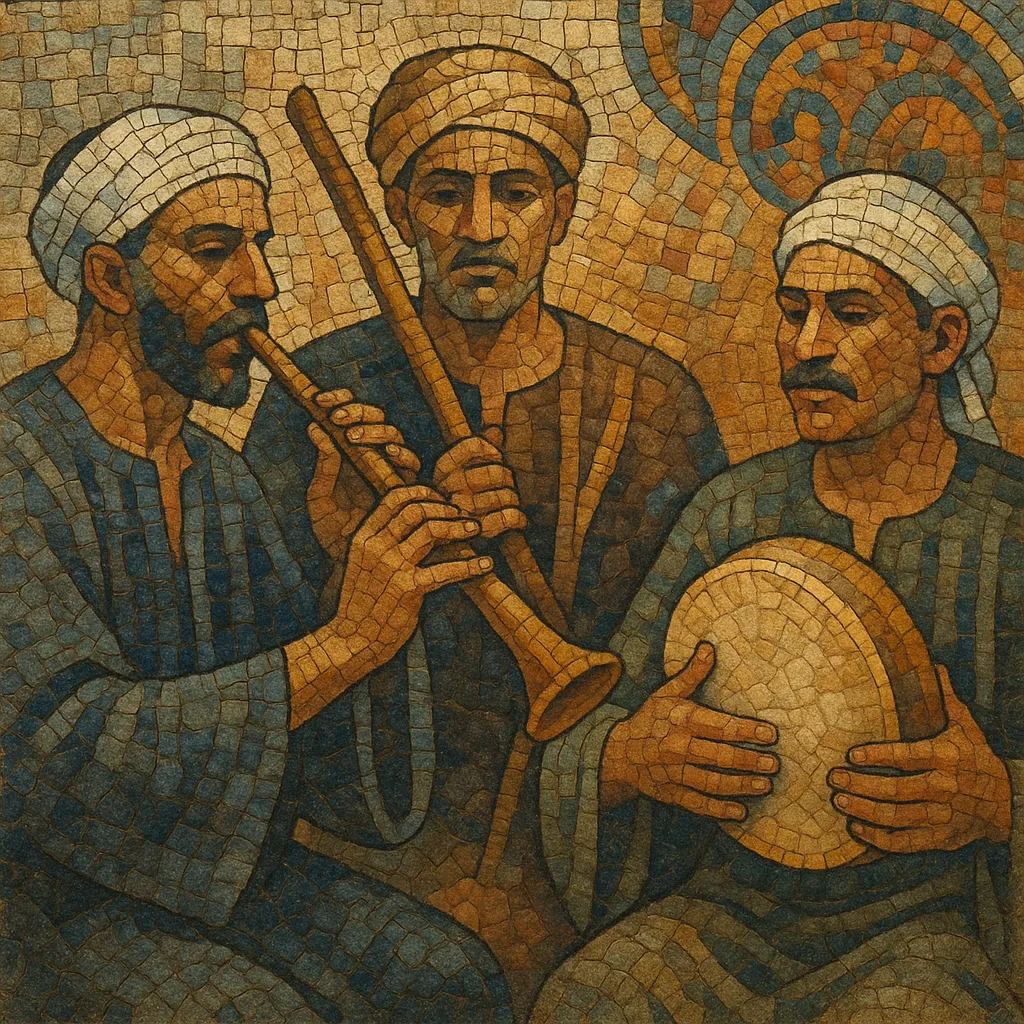Sa'idi (Upper Egyptian) music is the folk style of southern Egypt, built around driving reed melodies, piercing double‑reed timbres, and earthy percussion suitable for dance and ceremonial display.
It is best known for the iconic Sa'idi rhythm in 4/4 (often counted Dum–Tek–Dum–Dum–Tek), which powers stick‑fighting (tahtib) displays and cane dances adapted into belly dance. Melodies typically move within Arabic maqām frameworks such as Hijaz, Nahawand, or Rast, ornamented with slides and grace notes.
Traditional ensembles center on mizmar (double‑reed shawm), arghul or kawala (reed/flute), rabāba (spike fiddle), and hand drums like tabla/darbuka and duff/riqq. The music projects pride, vigor, and rustic celebration while retaining a lyrical, communal call‑and‑response character.
Sa'idi music originates among rural communities of Upper Egypt (the Saʿīd). Its core functions were communal: weddings, saints’ festivals (mawlid), harvest celebrations, and the martial art/dance of tahtib. Double‑reed mizmar bands and rabāba singers provided loud, outdoor‑capable music for processions and dance, embedded in the broader Arabic maqām tradition.
With the rise of Egyptian radio, cinema, and state folkloric troupes in the mid‑20th century, Sa'idi aesthetics moved from village squares to national stages. Choreographers such as those in the Reda Troupe codified cane dances and Sa'idi suites, while touring ensembles like Musicians of the Nile introduced Upper Egyptian mizmar styles to global audiences. Studio percussionists and bandleaders formalized the 4/4 Sa'idi rhythm for recordings and belly‑dance orchestration.
From the late 20th century onward, the Sa'idi groove became a staple in belly‑dance repertoires worldwide and a rhythmic color within Egyptian pop and shaʿabi lineages. Contemporary producers and mahraganat artists occasionally sample mizmar riffs and Sa'idi drum loops, fusing them with electronic bass, while regional folk troupes continue to maintain ceremonial and community functions in Upper Egypt.


